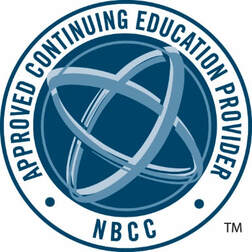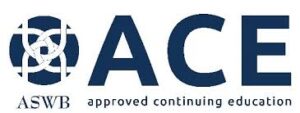 Date course created: May 2022
Date course created: May 2022
The “Ethics and Liability in Supervision” course offers essential guidance for mental health professionals providing clinical supervision. This 3-CE training helps you navigate ethical complexities, mitigate liability risks, and avoid board complaints while supervising. Through practical tools like checklists and contracts, this course empowers supervisors to maintain professional standards, address risks, and support supervisees effectively. Ideal for clinicians looking to enhance their supervision skills while staying compliant with ethical guidelines.
Please join us for this recorded webinar to gain knowledge in the area of ethics and potential liability when providing clinical supervision in the behavioral health care industry. This webinar will provide insight and check lists to increase your effectiveness, decrease your liability and avoid board inquiries and complaints as you provide support to clinical supervisees.
**This is a 3-CE noninteractive, self-paced online video course delivered in home study format via an industry-standard online learning platform**
At the end of this training, you should be able to do the following:
- Identify why it is important to start out with a discussion of setting professional standards with supervisees.
- Name three things that should be part of a check list when meeting with a supervisee for the first time.
- Identify why a clinical supervisor professional disclosure statement and contract/supervision agreement is a necessity.
- Identify why it is important to complete an annual evaluation and set professional growth goals with supervisees.
- Identify two reasons to support collaboratively documenting in clinical supervision and why supervisor and supervisee should sign the note.
- Name two important factors that should be in included in every supervision note.
- Identify two areas of risk in an in person clinical supervision model and two areas of risk in a telehealth clinical supervision model.
- Discuss the importance of understanding the different generations and communication patterns when engaging in a clinical supervisory relationship.
- Name the organization that certifies clinical supervisors and authored the clinical supervisor code of ethics.
- Identify why a clinical supervisor code of ethics is as important as your credentialing organization’s code of ethics.
- Identify two reasons why a check list is needed to organize and manage risk with a supervisee
- Name three critical items that should be included in a check list used in clinical supervision.
Other Considerations
- Liability insurance
- Obtain a consultant or supervisor to discuss clinical supervision challenges. Don’t be a lone ranger with risk!
Agenda:
00:00: – 01:00: Compliance & Legal Aspects
01:00 – 02:00:Building Trust & Maintaining Boundaries
02:00 – 02:44: Documentation & Supervision Notes
Objectives:
This training will provide participants clinical knowledge and tools to:
a). After completing this training, participants will be able to develop supervision checklists which include critical items that ensure professional standards are maintained and risk is properly mitigated.
b). After completing this training, participants will be able to identify and describe the importance of the following in your approach to supervision: initial professional standards discussion and annual evaluation, utilization of a disclosure statement and supervision agreement, collaboratively documenting, and setting professional goals.
c). After completing this training, participants will be able to identify and describe two areas of risk in an in person clinical supervision model and two areas of risk in a telehealth clinical supervision model.
Target Audience:
Professionals providing telehealth clinical supervision in the behavioral health care setting.
Instructional Level: Intermediate
Instructor(s): Jodi Ann Geis-Crowder, MS, LPC, ACS
Material Author(s): Jodi Ann Geis-Crowder, MS, LPC, ACS
For additional information about this course, the instructors, or the material authors, please contact Content Assistance at content@onlinececredits.com.
Course Materials & Delivery Method:
- Course materials – The course is composed of a recorded presentation and written materials (e.g. a slide deck and/or other worksheets, manuals, or handouts as provided by the instructor). The slide deck and any additional worksheets or handouts (as provided by the instructor) are made available inside the Lesson module after a course is purchased.
- Delivery Method – this course is a recorded asynchronous, self-paced webinar training, and there is no access time limit or due date to complete it once enrolled. The enrolled learner will stream the recorded presentation and view the materials from their internet connected device via an industry-standard online learning platform.
CE Approvals:

Online CE Credits has been approved by NBCC as an Approved Continuing Education Provider, ACEP No. 6795. Programs that do not quality for NBCC credit are clearly identified. Online CE Credits is solely responsible for all aspects of the programs.

Mind Works Professional Education, Inc. DBA Online CE Credits, #1974, is approved as an ACE provider to offer social work continuing education by the Association of Social Work Boards (ASWB) Approved Continuing Education (ACE) program. Regulatory boards are the final authority on courses accepted for continuing education credit. ACE provider approval period: July 23, 2024 – July 23, 2025. Social workers completing this course receive 3 ethics continuing education credits.
Other Helpful Information:
- Refund & Cancellation Policy – you may review this policy at any time by clicking here.
- Accessibility Accommodations – if you require a reasonable accommodation for any reason, please email your request to cc@onlinececredits.com
- Course Completion Requirements – 1.) View the entire Lesson module (accessible from the main course page), to include the embedded and/or linked presentation video(s), slide deck, additional materials, and/or links to any shared video clip(s) that may have been edited from the presentation video(s) to comply with copyright laws. 2.) Click into the Quiz module accessible from either the main course page or the Lesson page and complete the Quiz with an 80% or better pass rate. 3.) Complete the course evaluation – you’ll be sent to the evaluation automatically once you successfully pass the Quiz.
- Posttest Requirements – you must answer 80% or more of the Quiz questions correctly to pass. If you fail to pass the first time, you may attempt the quiz again until you are able to pass with a score of 80% or better. Quizzes are graded instantly and automatically by the learning management system once your attempt is submitted.
- Certificate of Completion – certificates of completion are automatically generated – downloadable from your Dashboard and emailed to you – once you view the Lesson materials and complete the Quiz and the course evaluation.
- How to Enroll – Login to the website first if you already have a user account. If not, you will create your permanent user account login information during course enrollment. Select the appropriate course library using the top menu of the website. Once inside your chosen course library, find and select your desired course to be taken to the main course page. Click the button on the top banner to enroll. When the order window pops up, enter your details and place your order. You will be emailed an enrollment confirmation message, and you’ll be sent to a landing page instructing you how to begin your newly enrolled course.
- System Requirements –
- Recommended Devices: Desktop, Laptop, or Tablet computer. (Note: Our platform is mobile responsive and may be fully accessed from a connected smartphone).
- Suggested Browsers: Updated version of Google Chrome, Microsoft Edge, or Apple Safari.
- Recommended Network: Home wifi, ethernet, or a public wifi with VPN (Note: agency or corporate networks are often equipped with restrictive firewalls that may adversely impact your experience on our platform).
- Recommended speed/bandwidth: Minimum download speed > 20Mbps and minimum upload speed > 6Mbps.
